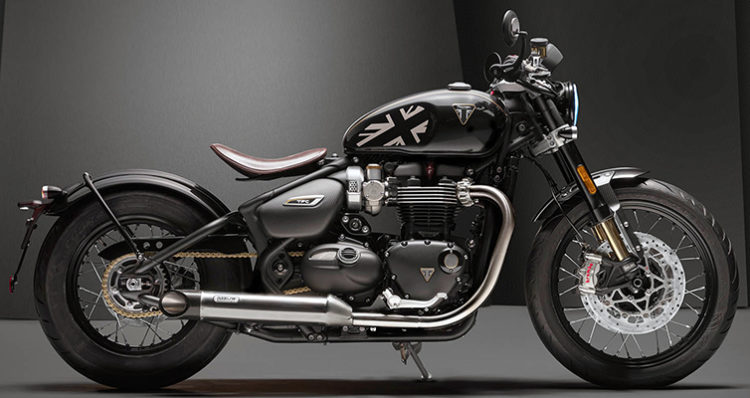
Everything You Need to Know About the Triumph Bonneville Bobber
motoplex | October 27, 2020 | 0 | Bobber , History , TriumphWhen it comes to style on the road, nothing quite looks or feels the same as the Triumph Bonneville Bobber. Grace and class meet the future with this sleek steel horse, first brought into production in late 2016. The futuristic floating tail will turn heads as you rumble on by. The Bobber style has long been an attention-grabber on the road, and we have created a list to help you understand everything you need to know about The Triumph Bonneville Bobber.

History
The “bobber” style originates from a motorcycle first produced in the 20s. This bike was called a “Cut Down” and was designed to remove any excess instruments or parts that didn’t contribute to performance. This created the appearance of a seat floating above the rear wheel, and after several versions during the 20s, the true bobber style was born. Based on the wildly popular Triumph Bonneville model, the Bonneville Bobber went into production in late 2016, with the first model hitting the market in 2017. The Bonneville series was introduced in 1959 and has been a top-selling model ever since. The Bobber is a style of motorcycle designed to cut as much extra weight from the bike as possible, allowing for maximum torque and traction. Triumph blended the popular style with the beauty of the Bonneville to series to create a truly special motorcycle
Features

Engine – The Triumph Bonneville Bobber is a cruiser class of motorcycle. It houses a liquid-cooled, 8 valve, SOHC 270° crank angle parallel twin 1200cc engine. The bore is 97.6mm, the stroke is 80mm, and the compression is 10.0:1. The bobber’s max power is 77Hp (57kW) at 6,100rpm, and the max torque is 78FT-lbs (106Nm) at 4,000rpm. It functions on a multipoint sequential electronic fuel injection system and has a brushed stainless steel 2 into 2 twin-skin exhaust system with brushed stainless silencers. It also has a chain final drive and a wet, multi-plate assist clutch, and a 6-speed transmission.

Chassis – The frame is a tubular steel cradle and the swingarm is also a twin-aided tubular steel. The front wheel is 32 spoke 19 x 2.5, and the rear wheel is 32 spoke 16 x 3.5. The front tire is 100/90-19 and the rear tire is 150/80 R16 (not sure how to read tires?). The front suspension is KYB 41mm forks, 90mm travel, and the rear suspension is KYB monoshock with linkage, 77mm rear wheel travel. The brake system implements a 310mm disc, Nissin 2-piston floating caliper ABS for the front, and a single 255mm disc, Nissin single piston floating caliper with ABS.

Dimensions: Let’s get down to the numbers. The handlebar width is 31.5in. The bike height (without mirrors) is 40.4in, and the seat sits at 27.17in. The wheelbase is 59.4in and the rake is 25.8°. The trail of the bike is 3.5in, and with a dry weight of only 502lbs, it’s one of lightest motorcycles ever built. The fuel tank capacity is 2.4 gal with an average mpg of 69.
Additional features: The Bobber comes equipped with several useful travel features. Cruise control and heated handgrips help with long distance travel and are accessible with in-handle scroll buttons taking dry road and rainy conditions into account. There is also a traction control display, average and current fuel consumption display, fuel range display, and more. The transmission has precision foot controls, and a single button cruise control option. This bike is also extremely affordable, with most models running around $11,900. Choose between a matte or glossy finish to complete your style.
We’ve been talking a lot, but riding is more fun. Visit us at Boise Indian Triumph to saddle up and test ride this beauty for yourself!
Fun Facts
- The term “Bobber” comes from the “bobtail” shortened appearance of the rear fender
- Its top speed is 95 miles per hour
- The bike is named after the Bonneville Salt Flats, where enthusiasts attempt to break the world land speed record
- The term “Bobber” was referred to as “bob-job” from the 30s through the 90s
- Class C racing, introduced by the AMA in 1933 served as the catalyst for the bobber style and popularity

